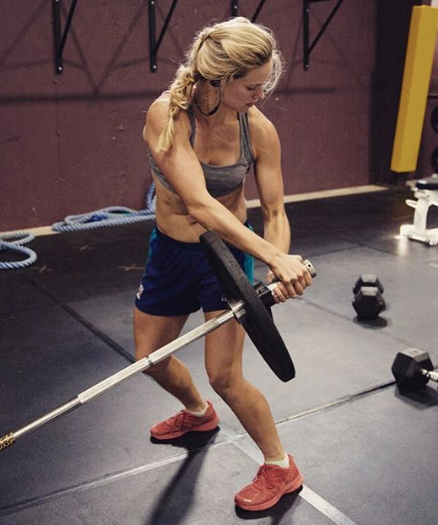
You’ve likely heard lots of different ideas about fueling and feeding on race day. When to eat, what to eat, and how to eat it – there are hundreds of opinions. Ultimately, it comes down to what you find works best for you; the gut can actually be trained to adapt to different diets and eating habits. However, current research does suggest some strategies that will optimize performance on race day. I’ll provide some answers to big picture concepts to help you ski your fastest, avoid muscle cramps, and recover best for the next race!
Do I really need to finish eating breakfast 3-4 hours before my race start?
Unfortunately for your 8 AM Birkie start, yes. The reason for this extends beyond just ensuring that your pre-race nerves don’t cause you to lose your whole bowl of oatmeal before it’s digested. When we eat a meal, the hormone insulin is released by the pancreas in response to rising blood sugar levels. Insulin helps us use the sugar from our meal by assisting its transport into muscle cells. Insulin levels peak about 60-90 minutes after eating.
Here’s why the timing for that meal is important. When we start exercising, insulin sensitivity is increased. [2,3] This means that if we eat breakfast during the 60-90-minute window before a race start, it aligns perfectly with a blood sugar crash as our bodies work to provide muscles with fuel. This results in classic symptoms of a “bonk”- leaving us feeling shaky, tingly, and nauseous.
By eating 3-4 hours before the race start, we ensure that all food is digested and absorbed, our blood sugar is stable, and our muscles are full of glycogen that is ready for use during the race. For those concerned with hunger during a race, consume a smaller, high-carbohydrate snack before the start to give you a boost – just don’t forget to pair your highly concentrated gels/chews with some water as this aids with absorption.
Should my race-feed sports drink contain protein?
Although you might think of protein as the golden ticket to long-lasting energy during exercise, research has shown otherwise. When we exercise at a high intensity, we use carbohydrates as our main source of energy. At lower intensities, we start to utilize fat; protein is a last resort, and therefore not something you need to prioritize on race day. Studies have shown no significant effects on time trial performance in cyclists who consumed sports drink that contained protein + carbohydrate versus those who consumed carbohydrate-only sports drink. This was true even during longer events. [4-7] Protein has negative implications, as it has been shown to slow gastric emptying, leading to feelings of GI distress like nausea in many individuals. So, during your race, the potential negative effects of protein consumption outweigh any benefits. Additionally, ingesting protein during exercise has not been shown to enhance subsequent performance at training camps. [4-6] The key to recovery, and protein, comes AFTER exercise (keep reading for more on this).
Should I drink coke on the last lap?
Research has unequivocally shown a performance benefit with caffeine consumption; its ability to assist with muscle contraction, energy metabolism, and pain suppression make it a very effective, legal, performance-enhancing drug. [8] Gels, chews, and sports drink with caffeine are all great options to help you perform best on race day. However, similar to any race day routine, you should try these out during a low-stakes event (such as a time trial or hard interval set) to figure out what works best for you. So, what’s the problem with drinking coke on the final lap of your 30k? First, coke has almost double the recommended 6% carbohydrate concentration for sports drink. [9] When you ingest highly concentrated carbohydrates, your body responds by pulling water into your blood, which can lead to GI issues like cramps, diarrhea, and nausea. This is about the last thing you want to deal with when cresting over that final climb! Instead, try watering down flattened coke, as carbonation can cause gastric upset. Alternative, opt for a caffeinated sports drink instead.
What about plain water?
Sodium is an essential electrolyte our bodies need in order to conduct electrical signals, which includes telling our muscles to fire. When we ski hard, we lose sodium in our sweat. If we only replace this fluid loss with water, we end up with electrolyte imbalances that can lead to muscle cramping and weakness. In more severe cases (for example, longer races in the heat), there is a risk of rapid brain swelling as your cells retain excess water.
While your feeds don’t need to contain protein, a sports drink with high sodium content will help you perform. Experts suggest choosing a sports drink that has a similar concentration of sodium to what you lose in your sweat, or 230–690 mg/L. [8] Some examples that fit this guideline include Nuun Endurance, Maurten Drink Mix 160, Skratch Labs Hydration Mix, and Gatorade Endurance Mix.
Do I really need to eat right after my race?
You’ve heard it before, and yes, it IS true- eating as soon as possible after you exercise is the absolute best thing you can do for recovery. This goes back to what was mentioned earlier- that insulin sensitivity is increased during exercise in order to help bring sugar from our blood into our muscles. Athletes should eat right after exercise to take advantage of this increased sensitivity, giving your muscles the opportunity to refuel after a hard effort. [10]
Here is where protein comes into play: research has shown that ingesting a post-exercise snack at a ratio of 3-4 g carbohydrate to every 1g of protein is the best way to replenish glycogen stores. [9] This means that eating as much steak as possible after a race isn’t the ticket to optimize recovery; rather, finding foods with the correct ratio of carbohydrate to protein is more important. [8,10] Many recovery drinks and bars already follow this rule, which makes them great choices. Another example of foods that fit this ratio are chocolate milk or a banana with 2 tbs of almond butter.
- Jeukendrup AE. Training the Gut for Athletes. Sports Med. 2017;47(1):101-110. doi:10.1007/s40279-017-0690-6
- Borghouts LB, Keizer HA. Exercise and insulin sensitivity: a review. Int J Sports Med. 2000;21(1):1-12. doi:10.1055/s-2000-8847
- Consitt LA, Dudley C, Saxena G. Impact of Endurance and Resistance Training on Skeletal Muscle Glucose Metabolism in Older Adults. Nutrients. 2019;11(11):2636. doi:10.3390/nu11112636
- Hansen M, Bangsbo J, Jensen J, et al. Protein intake during training sessions has no effect on performance and recovery during a strenuous training camp for elite cyclists. J Int Soc Sports Nutr. 2016;13:9. doi:10.1186/s12970-016-0120-4
- Breen L, Tipton KD, Jeukendrup AE. No effect of carbohydrate-protein on cycling performance and indices of recovery. Med Sci Sports Exerc. 2010;42(6):1140-1148. doi:10.1249/MSS.0b013e3181c91f1a
- van Essen M, Gibala MJ. Failure of protein to improve time trial performance when added to a sports drink. Med Sci Sports Exerc. 2006;38(8):1476-1483. doi:10.1249/01.mss.0000228958.82968.0a
- Cosio-Lima LM, Desai B, Stelzer JW, Schuler PB. Effects of 4:1 carbohydrate/protein solution versus a carbohydrate-alone solution on IL-6, TNF-α, and cortisol during prolonged cycling in hot environmental conditions. Open Access J Sports Med. 2012;3:21-26. doi:10.2147/OAJSM.S28176
- Vitale K, Getzin A. Nutrition and Supplement Update for the Endurance Athlete: Review and Recommendations. Nutrients. 2019;11(6):1289. doi:10.3390/nu1106128
- Kerksick CM, Arent S, Schoenfeld BJ, et al. International society of sports nutrition position stand: nutrient timing. J Int Soc Sports Nutr. 2017;14(1):1-21. doi:10.1186/s12970-017-0189-4
- Alghannam AF, Gonzalez JT, Betts JA. Restoration of Muscle Glycogen and Functional Capacity: Role of Post-Exercise Carbohydrate and Protein Co-Ingestion. Nutrients. 2018;10(2). doi:10.3390/nu10020253
Jessica Yeaton
A long-time APU athlete, Jessica represented Australia at the 2018 and 2022 Olympics. She is currently pursuing her Doctorate in Physical Therapy from the University of New Mexico. When she is not ski racing or studying, you can find her out on her mountain bike exploring the trails.



